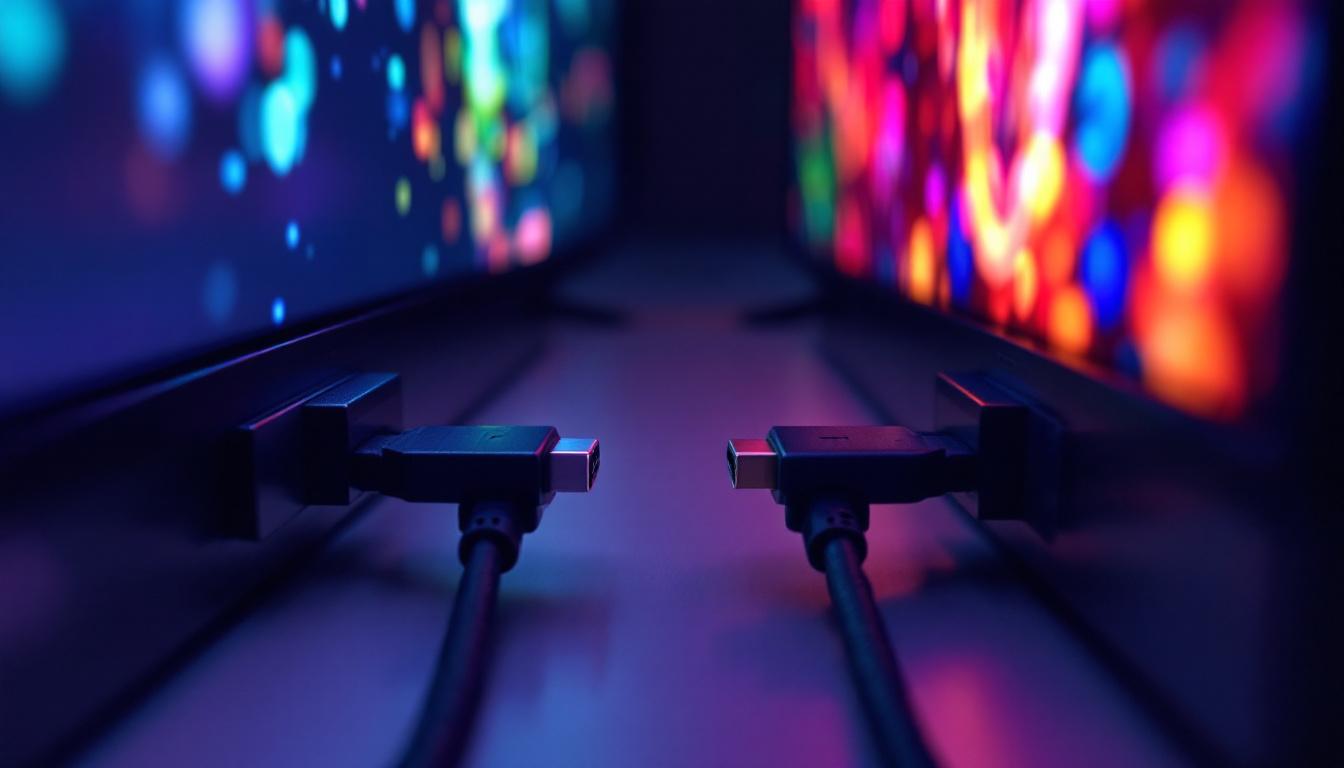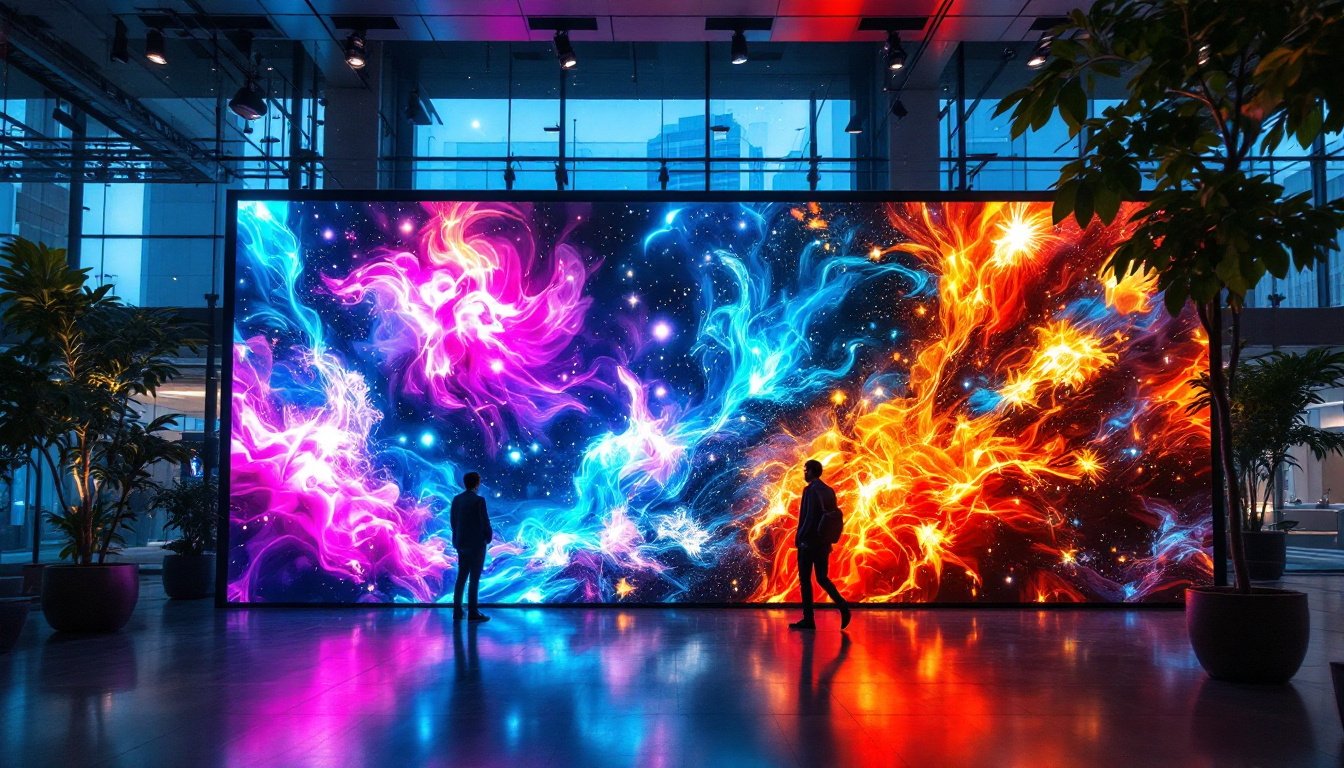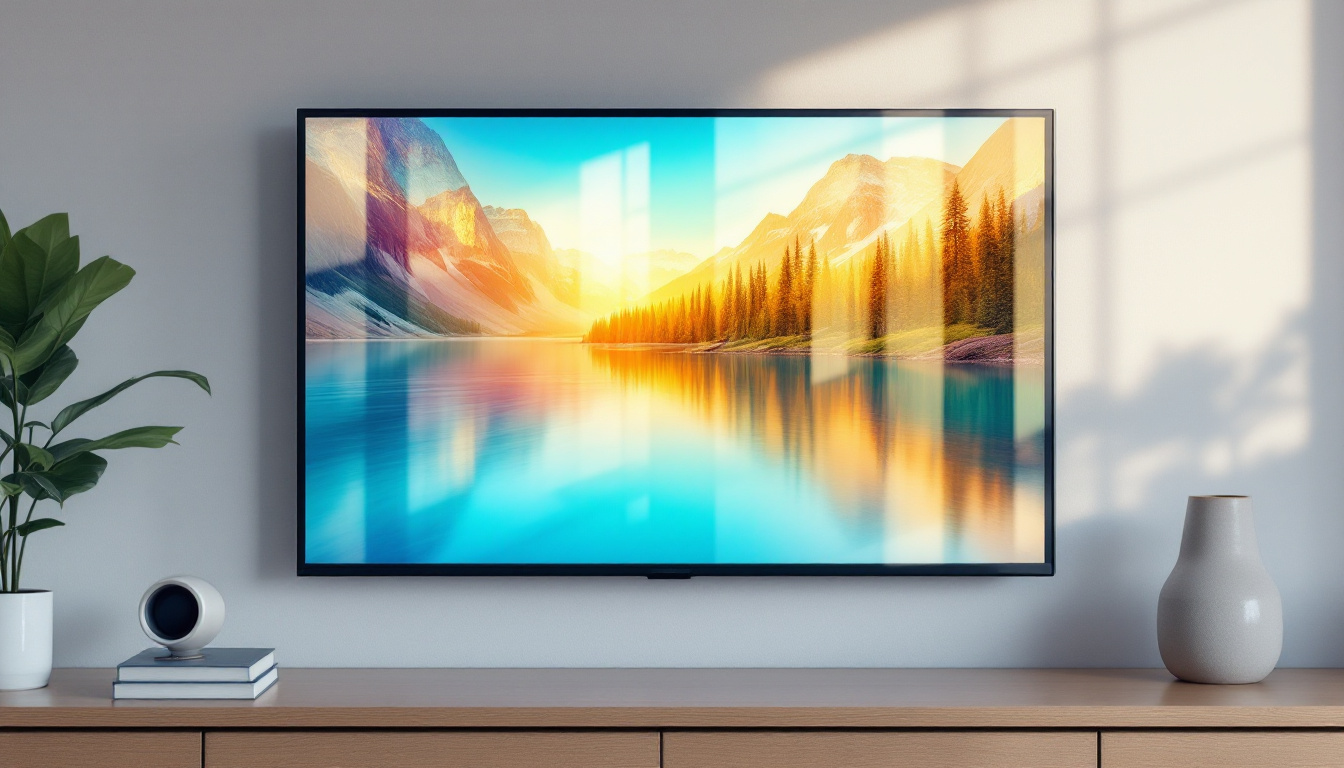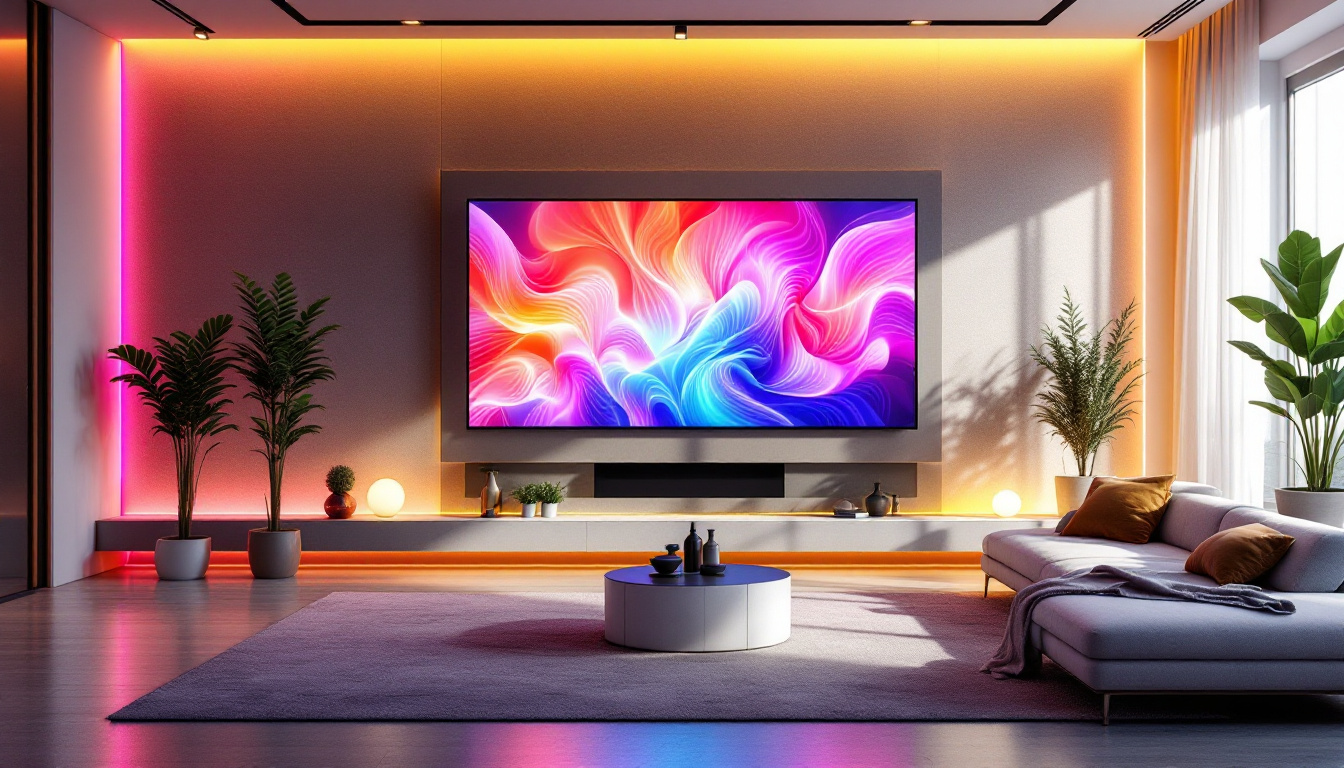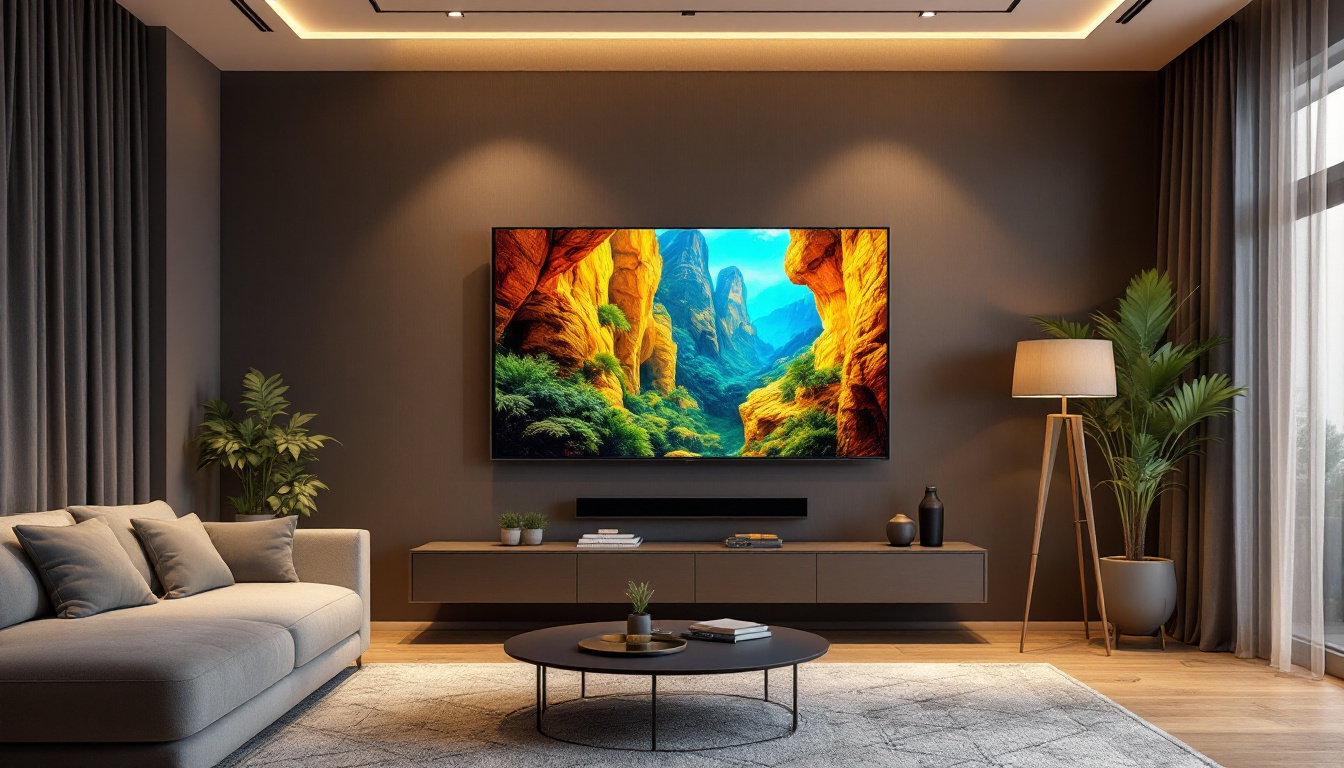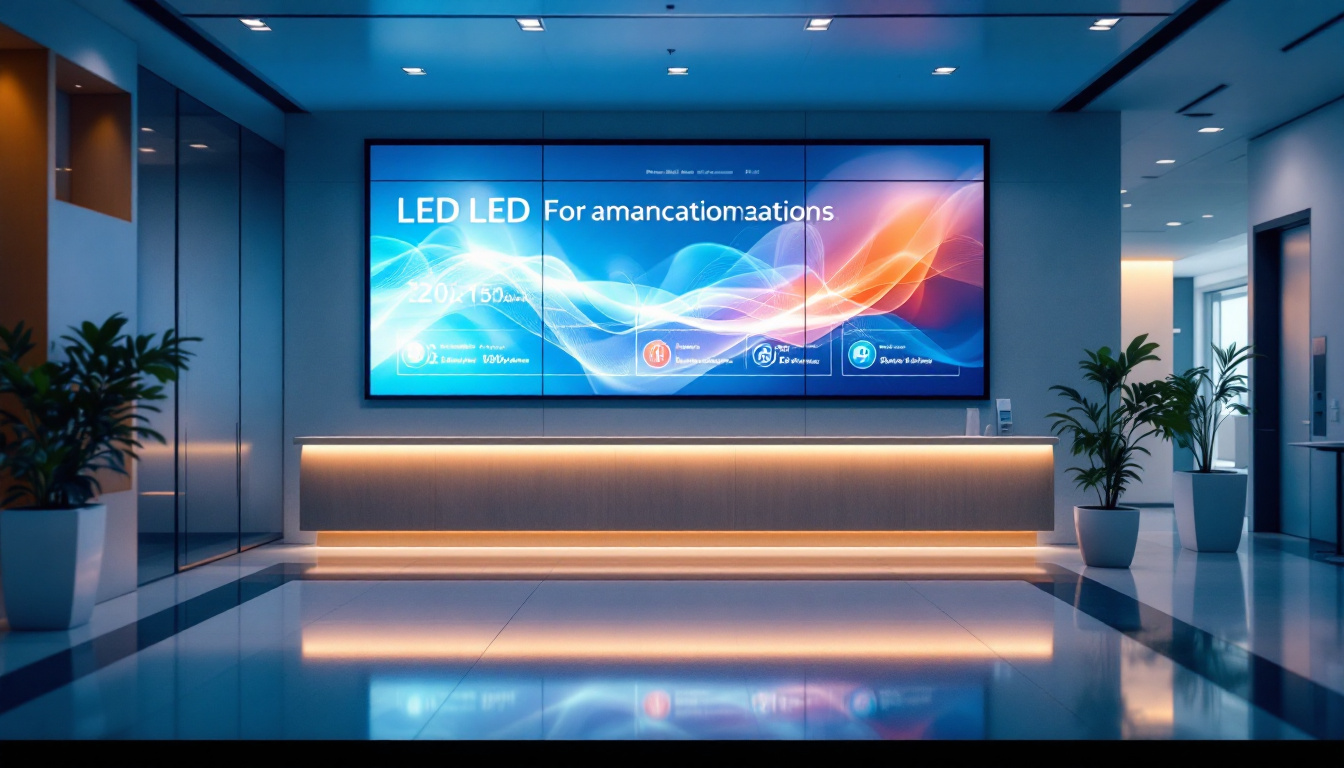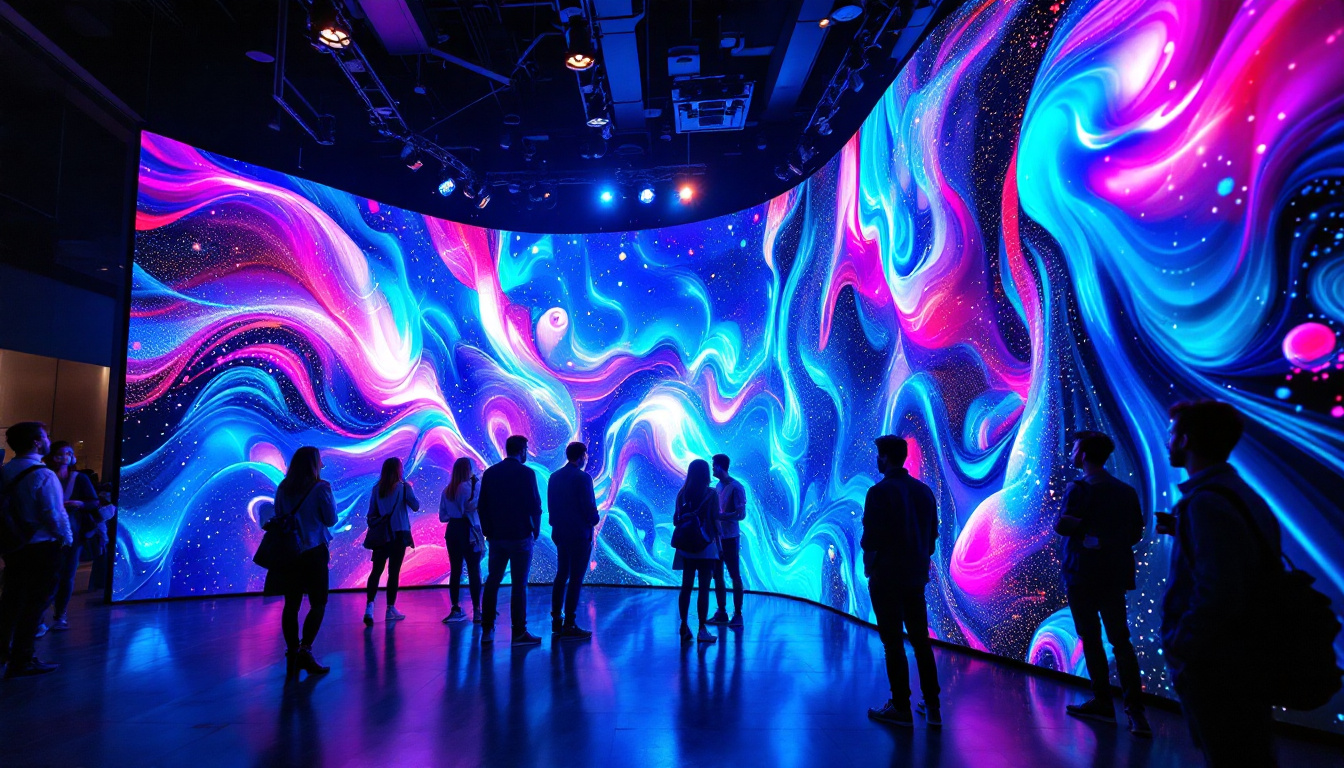Displayport 1.4A Vs HDMI: LED Display Explained
In the world of digital displays, choosing the right connection interface can significantly impact your viewing experience. Whether you are a gamer, a professional content creator, or simply a home theater enthusiast, understanding the differences between DisplayPort 1.4a and HDMI standards is crucial. Both interfaces are widely used to connect LED displays to various devices, but they offer distinct advantages and limitations. This article delves into the technical details, practical applications, and future-proofing considerations of DisplayPort 1.4a and HDMI, helping you make an informed decision for your LED display setup.
Understanding DisplayPort 1.4a and HDMI: The Basics
What is DisplayPort 1.4a?
DisplayPort 1.4a is a digital display interface developed by the Video Electronics Standards Association (VESA). Introduced in 2018, it is an enhancement over the previous DisplayPort 1.4 standard, primarily focusing on improved audio and video transmission capabilities. DisplayPort is commonly found in high-end monitors, gaming PCs, and professional workstations due to its robust bandwidth and support for advanced features.
One of the defining characteristics of DisplayPort 1.4a is its support for Display Stream Compression (DSC) 1.2a, which allows for visually lossless compression of video streams. This enables the transmission of ultra-high resolutions and refresh rates without requiring excessive bandwidth, making it ideal for demanding applications like 8K displays and high-refresh-rate gaming monitors. Additionally, DisplayPort 1.4a supports features such as Multi-Stream Transport (MST), allowing users to connect multiple monitors through a single port, which is particularly beneficial for professionals who require expansive screen real estate for multitasking or immersive gaming experiences.
Furthermore, DisplayPort 1.4a includes support for HDR10 and other high dynamic range formats, enhancing the visual experience by providing greater contrast and a wider color gamut. This is particularly advantageous for content creators and gamers who seek to achieve the most lifelike visuals possible. The versatility of DisplayPort also extends to its ability to carry audio signals, making it a comprehensive solution for high-quality multimedia setups.
What is HDMI?
High-Definition Multimedia Interface (HDMI) is a widely adopted interface standard for transmitting uncompressed video and audio data. Since its introduction in 2003, HDMI has become the go-to connection for consumer electronics such as TVs, Blu-ray players, gaming consoles, and streaming devices. The latest widely used version, HDMI 2.1, offers significant improvements in bandwidth and features compared to its predecessors.
HDMI supports a broad range of audio and video formats, including 4K and 8K resolutions, high dynamic range (HDR), and advanced audio formats like Dolby Atmos. Its universal compatibility and ease of use have made it the default choice for most home entertainment systems. Moreover, HDMI 2.1 introduces features such as Variable Refresh Rate (VRR) and Quick Frame Transport (QFT), which are particularly beneficial for gamers, as they help reduce latency and screen tearing, providing a smoother gaming experience.
Another notable aspect of HDMI is its support for Consumer Electronics Control (CEC), which allows users to control multiple devices connected via HDMI with a single remote. This feature simplifies the user experience, making it easier to navigate between devices without the hassle of multiple remotes. HDMI’s widespread adoption across various devices ensures that it remains a critical component in the evolution of home entertainment technology, catering to both casual viewers and serious audiophiles alike.
Technical Comparison: Bandwidth, Resolution, and Refresh Rates
Bandwidth Capabilities
Bandwidth determines how much data can be transmitted through the cable per second, directly affecting the maximum resolution and refresh rate achievable. DisplayPort 1.4a supports a maximum raw bandwidth of 32.4 Gbps, with an effective bandwidth of approximately 25.92 Gbps after encoding overhead. This high bandwidth allows DisplayPort 1.4a to handle resolutions up to 8K (7680×4320) at 60Hz with HDR, or 4K (3840×2160) at 120Hz with HDR using DSC.
In contrast, HDMI 2.1, the latest HDMI standard widely available on consumer devices, offers a maximum bandwidth of 48 Gbps. This increase enables HDMI 2.1 to support 8K resolution at 60Hz uncompressed, or 4K at 120Hz with HDR. However, earlier HDMI versions, such as 2.0, are limited to 18 Gbps, restricting their support to 4K at 60Hz.
Resolution and Refresh Rate Support
DisplayPort 1.4a excels in supporting high refresh rates at high resolutions, making it a favorite among gamers and professionals who require smooth motion and detailed visuals. For example, it can deliver 4K at 120Hz with HDR using DSC, or 5K at 60Hz without compression. Its support for multi-stream transport (MST) also allows daisy-chaining multiple monitors from a single port, enhancing productivity setups.
HDMI 2.1 has closed much of the gap by supporting 4K at 120Hz and 8K at 60Hz natively, which is particularly beneficial for next-generation gaming consoles and high-end TVs. However, HDMI lacks MST support, limiting its multi-display capabilities compared to DisplayPort.
Audio and Additional Features
Audio Transmission
Both DisplayPort 1.4a and HDMI transmit multi-channel audio alongside video signals. HDMI has traditionally been the leader in audio features, supporting formats like Dolby TrueHD, DTS-HD Master Audio, and object-based audio formats such as Dolby Atmos and DTS:X. This makes HDMI the preferred choice for home theater systems where immersive audio is a priority.
DisplayPort 1.4a supports up to 32 audio channels and high sample rates, but its adoption in consumer audio devices is less widespread. It is more commonly used in professional audio-visual setups where video quality is paramount.
HDR and Color Depth
High Dynamic Range (HDR) enhances the contrast and color range of displays, providing more vibrant and lifelike images. Both DisplayPort 1.4a and HDMI 2.1 support HDR10, HDR10+, and Dolby Vision, enabling compatibility with a wide range of HDR content.
DisplayPort 1.4a supports up to 10-bit color depth natively and can handle 12-bit color with DSC, which is essential for professional photo and video editing. HDMI 2.1 also supports up to 12-bit color depth, ensuring rich color reproduction for gaming and media consumption.
Practical Use Cases and Device Compatibility
Gaming and High-Performance Computing
For PC gamers and users of high-performance computing systems, DisplayPort 1.4a is often the preferred interface. Its higher effective bandwidth, support for adaptive sync technologies like AMD FreeSync and NVIDIA G-Sync, and MST capabilities provide a smoother, more flexible multi-monitor experience. Many high-end gaming monitors come equipped with DisplayPort inputs to take advantage of these features.
That said, HDMI 2.1 has gained significant traction in the gaming world, especially with the release of the PlayStation 5 and Xbox Series X consoles, both of which utilize HDMI 2.1 to deliver 4K at 120Hz gaming. HDMI’s widespread compatibility with TVs and sound systems also makes it a convenient choice for console gamers.
Professional and Creative Workflows
Professionals in graphic design, video editing, and 3D rendering often prioritize color accuracy, resolution, and multi-display setups. DisplayPort 1.4a’s support for higher resolutions, color depths, and MST makes it ideal for multi-monitor workstations. It also tends to offer lower latency and more consistent performance in demanding applications.
While HDMI is capable of supporting professional displays, its limitations in multi-stream transport and lower refresh rates at ultra-high resolutions make it less favored in professional environments. However, HDMI remains essential in video production environments where compatibility with consumer TVs and projectors is necessary.
Home Theater and Consumer Electronics
HDMI dominates the home theater market due to its compatibility with a vast array of consumer electronics, including TVs, AV receivers, Blu-ray players, and streaming devices. Its support for advanced audio formats and ARC/eARC (Audio Return Channel/enhanced Audio Return Channel) simplifies audio setup by allowing audio signals to travel both ways along a single cable.
DisplayPort is rarely found on consumer TVs and home theater equipment, limiting its use in this space. For users focused on home entertainment, HDMI remains the practical and convenient choice.
Future-Proofing and Emerging Technologies
DisplayPort 2.0 and HDMI 2.1+ Developments
While DisplayPort 1.4a and HDMI 2.1 are current standards, both interfaces are evolving. DisplayPort 2.0, released in 2019, promises up to 80 Gbps bandwidth, enabling uncompressed 8K at 60Hz or 4K at 240Hz without compression. This standard is expected to become more common in future monitors and graphics cards, further enhancing DisplayPort’s capabilities.
On the HDMI front, HDMI 2.1a introduces Source-Based Tone Mapping (SBTM), improving HDR performance by optimizing content on a per-source basis. HDMI continues to be the standard for consumer electronics, with manufacturers pushing for higher bandwidth and better audio-visual features.
Cable Quality and Connector Durability
Both DisplayPort and HDMI cables vary in quality, which can affect signal integrity, especially at higher resolutions and refresh rates. Certified cables that meet the respective standards are essential for optimal performance. DisplayPort connectors feature a latch mechanism that prevents accidental disconnection, whereas HDMI connectors rely on friction fit, which can be less secure in some setups.
Summary: Which Interface is Best for Your LED Display?
Choosing between DisplayPort 1.4a and HDMI largely depends on your specific needs and the devices you intend to connect. DisplayPort 1.4a offers superior bandwidth efficiency, multi-monitor support, and higher refresh rates at ultra-high resolutions, making it ideal for gamers and professionals who demand the best performance from their LED displays.
HDMI, particularly version 2.1, provides broader compatibility with consumer electronics, advanced audio support, and simplified connectivity for home theater setups. It is the preferred choice for console gaming, streaming, and general multimedia consumption.
For users seeking future-proof solutions, keeping an eye on upcoming standards like DisplayPort 2.0 and HDMI 2.1a is advisable. Meanwhile, ensuring that your cables and devices are certified for the desired standard will guarantee a smooth and high-quality viewing experience.
Final Thoughts
Both DisplayPort 1.4a and HDMI have their unique strengths and cater to different segments of the LED display market. Understanding their technical capabilities and practical applications empowers consumers and professionals alike to optimize their setups for the best possible visual and audio performance. Whether prioritizing ultra-high resolutions, multi-monitor configurations, or seamless home theater integration, selecting the right interface is a foundational step toward an immersive and enjoyable viewing experience.
Explore Cutting-Edge LED Display Solutions with LumenMatrix
Ready to elevate your visual experience with the latest in LED display technology? LumenMatrix is at the forefront of innovation, offering a wide range of LED display solutions tailored to your needs. From captivating Indoor and Outdoor LED Wall Displays to dynamic Vehicle and Sports LED Displays, our products are designed to enhance engagement and ensure your message makes a lasting impact. Discover the perfect LED display for any setting, whether it’s a Custom LED Display, an All-in-One solution, or a Transparent Display that blends seamlessly into your environment. Check out LumenMatrix LED Display Solutions today and transform your space with unparalleled clarity and vibrancy.

